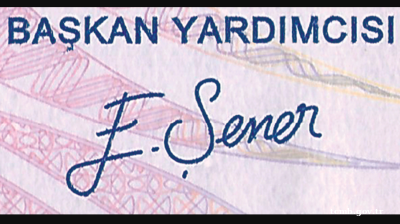Turkey’s economy expanded by 3.1% y/y in the second quarter of 2016, easing from 4.7% in the previous three months as domestic demand weakened, data from statistics office TUIK showed on September 9.
The reading was a disappointment to the market as analysts were looking for a GDP growth of 3.4% in April-June, raising more questions about the performance of the $720bn economy in the remainder of the year. What is more worrying, the slowdown predates July’s coup attempt, which already seems to have disrupted activity, analysts at Capital Economics write in a note.
“Overall, we think there’s a very real possibility that GDP may contract in q/q terms in the third quarter,” the analysts suggest. “Today’s data mean the risks to our growth forecast for this year of 3.3% are now skewed to the downside. Growth of 2.8-3.0% now looks more plausible.”
The government in Ankara targets 4.5% growth for this year.
The lower-than-expected GDP figures will provide the central bank with necessary arguments for making a case for further easing despite the stubbornly high inflation. Actually, the central bank has been injecting more liquidity to the financial markets for some time to boost demand.
On a seasonally and calendar adjusted basis, GDP edged up 0.3% from the first quarter, when it rose 0.7% q/q. The economy expanded at 3.9% in the first half from a year ago.
Households’ final consumption, which accounted for 67% of national income, increased by 5.2% y/y in the second quarter, weakening from the 7.1% y/y rise registered in the first three months of the year. Government expenditure growth accelerated to 15.9% y/y from 10.9%, partly compensating for the weaker household demand.
In a worrying sign, gross capital formation contracted 0.6% y/y in Q2 after remaining flat in the previous quarter. Private investments fell by 1.6% y/y, to follow a 0.8% y/y decline in Q1. Export growth weakened to 0.2% y/y from 2.4% y/y in Q1. The pace of import growth edged up to 7.7% in Q2 from 7.3% y/y in Q1. The government says it is working on a set of measures to increase the weight of investments and exports.
On the production front, industry grew 3.9% y/y in Q2, after expanding 5.7% y/y in the previous three months. The key manufacturing sector registered an output increase of 3% y/y, versus 5.7% in Q1. Recent indicators have not been very promising too, pointing to a weaker manufacturing output: industrial production contracted sharply in July and the PMI index fell in August to its lowest level since early 2009.
The construction sector’s 7% y/y growth outpaced the previous quarter’s 6.5%, TUIK data also showed. The government is now trying to stimulate house demand with a number of measures, calling on local banks to cut interest rates on housing loans and reducing the VAT on home sales.
“I guess it [GDP growth] could have been worse - sub 3 per cent and I think there would be more focus/expectations of Moody’s using that as the smoking gun for them to pull the trigger on a downgrade,” Tim Ash at Nomura commented on the growth figures. “Not sure this number is decisive from a rating perspective.”
Lower growth, a smaller current account deficit also helps the central bank sell a rate cutting agenda which could support bond inflows, according to Ash.
| Real GDP growth by Sectors | |||||||||
| (%) | 2014 | 2015 | Q1/15 | Q2/15 | Q3/15 | Q4/15 | H1/16 | Q1/16 | Q2/16 |
| Agriculture, forestry and fishing | -2.1 | 7.6 | 3.9 | 7.7 | 11.4 | 2.8 | 0.3 | 2.4 | -1.0 |
| Industry | 3.5 | 3.3 | 0.4 | 4.0 | 1.5 | 7.2 | 4.8 | 5.7 | 3.9 |
| Mining and quarrying | 5.6 | -2.3 | -8.1 | -5.0 | -2.6 | 6.0 | 2.1 | 2.7 | 1.6 |
| Manufacturing | 3.7 | 3.8 | 1.2 | 4.8 | 1.3 | 7.8 | 4.3 | 5.7 | 3.0 |
| Electricity, gas, steam and air conditioning supply | 4.1 | 2.4 | 1.3 | 2.0 | 1.6 | 4.0 | 4.4 | 3.6 | 5.2 |
| Water supply, sewerage, waste management and remediation activities | 10.8 | 10.4 | 6.8 | 8.8 | 12.9 | 12.7 | 9.6 | 8.7 | 10.5 |
| Construction | 2.2 | 1.7 | -2.7 | 1.9 | 2.0 | 5.4 | 6.7 | 6.5 | 7.0 |
| Services | 4.3 | 4.8 | 4.0 | 4.1 | 5.0 | 6.1 | 4.3 | 5.0 | 3.6 |
| Wholesale and retail trade | 1.9 | 2.1 | 1.1 | 2.3 | 0.3 | 4.6 | 4.4 | 5.5 | 3.4 |
| Transportation and storage | 3.1 | 2.9 | 1.1 | 2.1 | 2.3 | 6.0 | 2.3 | 3.6 | 1.1 |
| Accomodation and food service activities | 2.8 | 4.6 | 5.0 | 2.7 | 6.0 | 3.5 | -6.3 | -0.9 | -11.4 |
| Information and communication | 3.3 | 3.3 | 9.2 | -1.1 | 1.5 | 3.7 | 6.8 | 2.4 | 11.4 |
| Financial and insurance activities | 7.3 | 10.0 | 6.7 | 9.9 | 13.6 | 9.8 | 6.0 | 6.5 | 5.5 |
| Real estate activities | 2.8 | 2.6 | 3.1 | 3.0 | 2.8 | 1.5 | 3.5 | 3.4 | 3.7 |
| Professional, scientific and technical activities | 10.9 | 11.4 | 14.1 | 10.2 | 10.2 | 10.6 | 8.6 | 8.9 | 8.2 |
| Administrative and support service activities | 5.7 | 5.3 | 6.3 | 4.8 | 2.6 | 6.8 | 5.8 | 7.1 | 4.2 |
| Public administration and defence; compulsory social security | 2.4 | 2.2 | -0.6 | 0.5 | 5.1 | 3.8 | 4.4 | 4.4 | 4.4 |
| Education | 6.5 | 5.4 | 7.1 | 5.1 | 3.2 | 5.9 | 5.6 | 5.7 | 5.5 |
| Human health and social work activities | 5.6 | 3.1 | 5.2 | 2.3 | 2.1 | 2.3 | 3.6 | 4.4 | 2.7 |
| Arts, entertaintment and recreation | 6.9 | 5.3 | 2.6 | 5.7 | 4.5 | 8.6 | 2.4 | 3.8 | 0.7 |
| Other service activities | 2.2 | 0.0 | 0.4 | -0.2 | -0.4 | 0.3 | 0.1 | 0.3 | -0.2 |
| Activities of household as employers | 2.8 | -1.4 | 0.9 | -5.2 | -5.4 | 1.6 | 0.6 | -2.0 | 5.1 |
| Sectoral total | 3.4 | 4.6 | 2.8 | 4.3 | 4.8 | 6.2 | 4.2 | 5.1 | 3.4 |
| Financial intermediation services indirectly measured | 7.3 | 14.4 | 9.6 | 15.8 | 18.3 | 13.7 | 7.9 | 9.7 | 6.2 |
| Taxes-subsidies | 2.6 | 8.4 | 6.5 | 8.6 | 7.9 | 10.3 | 4.4 | 5.6 | 3.3 |
| Gross domestic product (Purchaser's price) | 3.0 | 4.0 | 2.5 | 3.7 | 3.9 | 5.7 | 3.9 | 4.7 | 3.1 |
| source: tuik | |||||||||
News

Putin's meeting with Trump in Budapest is a slap in the face for the EU
As preparations get underway for a highly anticipated summit between Russian President Vladimir Putin and former US President Donald Trump in Budapest, attention is turning to an unusual but politically sensitive detail: how will Putin get there?

Zelenskiy leaves Washington empty handed, Trump and Putin head to Budapest to talk business
Ukrainian President Volodymyr Zelenskiy went into a White House meeting with US President Donald Trump on October 17 hoping for a big arms deal. He came out of the meeting empty handed.

Taiwan’s KMT elects new leader
Cheng Li-wun, the only female contender among six candidates, defeated former Taipei mayor Hau Lung‑bin by a wide margin, winning over 50% of the ballot in the leadership race for Taiwan’s opposition Kuomintang on October 18.

Gold price in Sri Lanka plunges
The sudden drop of around LKR20,000 in both 22- and 24-carat sovereigns adds to a volatile recent run for precious-metals pricing in the island nation: only days earlier, gold prices were noted to be climbing.

 Cropped_0.png)


